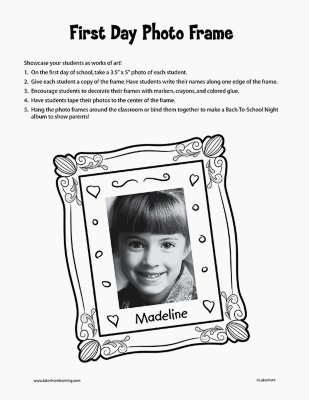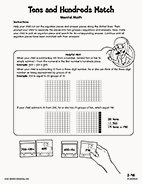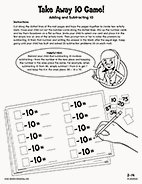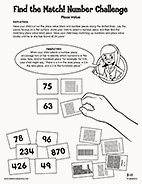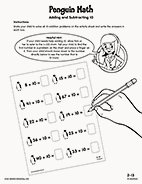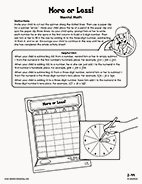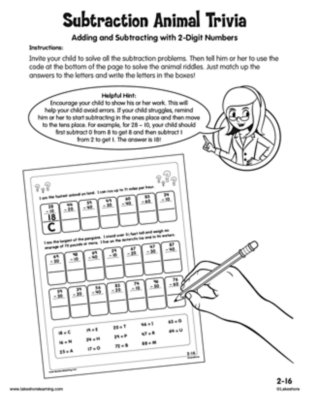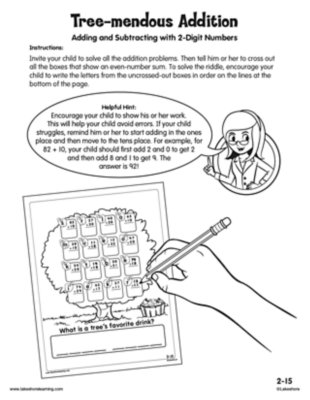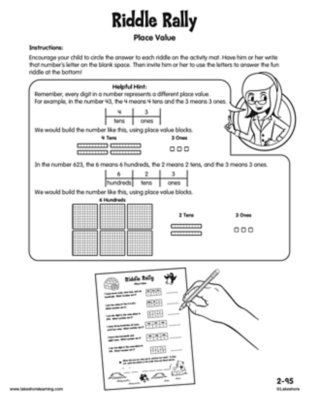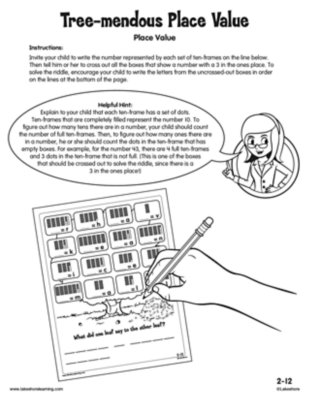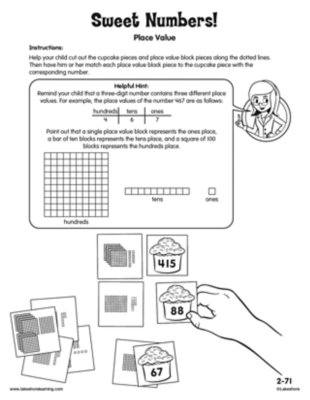Narrow by Grade
- Infant (0)
- Toddler (1)
- Preschool (1)
- Pre-K (1)
- Kindergarten (1)
- 1st (1)
- 2nd (11)
- 3rd (1)
- 4th (0)
- 5th (0)
- 6th & Up (0)
Grade
Narrow by Age
- 0-18m (0)
- 18-36m (1)
- 3 yrs. (1)
- 4 yrs. (1)
- 5 yrs. (9)
- 6 yrs. (15)
- 7 yrs. (11)
- 8 yrs. (7)
- 9 yrs. (4)
- 10 yrs. (2)
- 11 yrs. & Up (0)
Age 7 yrs.
11 results for "ten frame"
During second grade, your child will learn to mentally subtract multiples of 10 from three-digit numbers without having to write down the problems and work them out. For example, 800 — 10 = 790.
View worksheetWhen entering second grade, your child should be able to mentally add 10 to or subtract 10 from any two-digit number—without having to count. For example, 32 + 10 = 42 and 35 — 10 = 25.
View worksheetWhen entering second grade, your child should be able to see groups of tens and ones when counting. Your child should also understand that the two digits in a two-digit number represent tens and ones. For example, there are 3 tens and 2 ones in the number 32.
View worksheetWhen entering second grade, your child should be able to mentally add 10 to or subtract 10 from any two-digit number—without having to count. For example, 32 + 10 = 42 and 35 — 10 = 25.
View worksheetDuring second grade, your child will learn to mentally subtract multiples of 10 from three-digit numbers without having to write down the problems and work them out. For example, 800 — 10 = 790.
View worksheetWhen entering second grade, your child should be able to add and subtract using a two-digit number and a one-digit number, as well as a two-digit number and another two-digit number. For example, 22 + 20 = 42 and 41 — 10 = 31.
View worksheetWhen entering second grade, your child should be able to add and subtract using a two-digit number and a one-digit number, as well as a two-digit number and another two-digit number. For example, 22 + 20 = 42 and 41 — 10 = 31.
View worksheetDuring second grade, your child will learn to identify groups of hundreds, tens and ones when counting. Your child will also learn that the three digits in a three-digit number represent hundreds, tens and ones. For example, there are 7 hundreds, 2 tens and 6 ones in the number 726.
View worksheetWhen entering second grade, your child should be able to see groups of tens and ones when counting. Your child should also understand that the two digits in a two-digit number represent tens and ones. For example, there are 3 tens and 2 ones in the number 32.
View worksheetDuring second grade, your child will learn to identify groups of hundreds, tens and ones when counting. Your child will also learn that the three digits in a three-digit number represent hundreds, tens and ones. For example, there are 7 hundreds, 2 tens and 6 ones in the number 726.
View worksheet